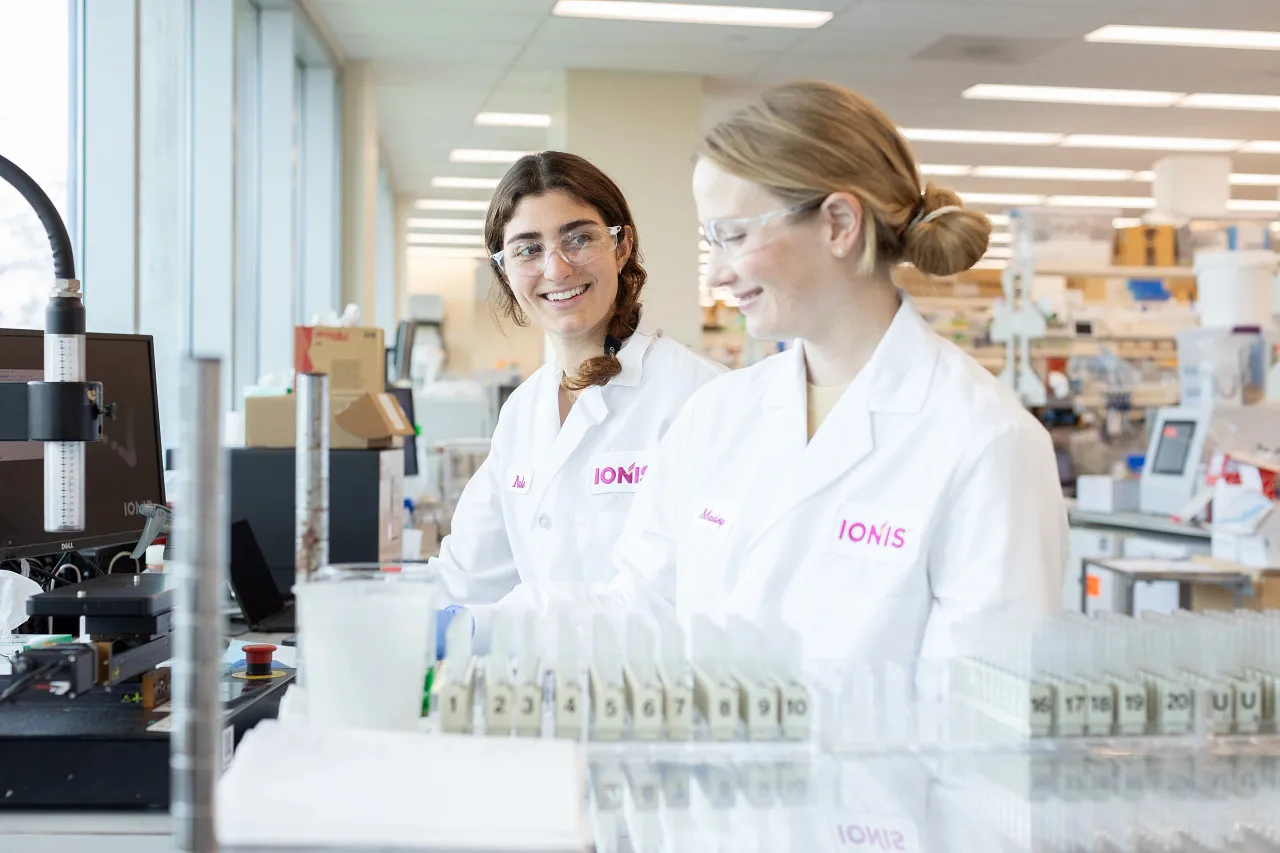
For over three decades, Ionis has been at the forefront of discovering and developing RNA-targeted medicines that address the root causes of serious disease. Clinical decisions at Ionis are grounded in scientific evidence, and when early research showed the potential for RNA-targeted technology to help improve the lives of people with HAE, Ionis was compelled to move forward.
Following the Science, Leading with Purpose
Hereditary Angioedema (HAE) is a rare and potentially life-threatening genetic condition characterized by unpredictable and potentially severe swelling attacks. Living with HAE often means living with attacks which cause the need to make regular accommodations, while facing an emotional and physical toll.
Ionis’ journey in HAE first began with exploration of the kallikrein pathway, the inflammatory cascade that triggers HAE attacks.1
Under the hypothesis that Ionis’ technology had the potential to precisely help prevent HAE attacks, Kenneth Newman, M.D., Senior Vice President, Clinical Development at Ionis recounts that “in 2010, our research team meticulously evaluated every step in the kallikrein pathway to identify a target that offered the best balance of efficacy and safety.” Plasma prekallikrein (PKK), a protein that activates inflammatory mediators associated with acute attacks of HAE, emerged as a potential target.2 This focus was driven by the theory that targeting plasma PKK expression at the messenger RNA level could reduce protein production, interrupting the pathway that leads to HAE attacks and presenting a new opportunity for effective disease management.3
In 2017, Ionis’ promising science in HAE caught the attention of Dr. Danny Cohn, MD, PhD, an internist and vascular medicine specialist in Amsterdam, who faced a challenge with one of his patients with a particulary severe case of HAE. He was intrigued by the investigational medicine Ionis was studying, which leveraged oligonucleotides, small sequences of modified DNA, to precisely target and interact with a specific mRNA.4 He believed that the unique mechanism of action could be the breakthrough his patient – and many others with HAE – needed.
Ionis was able to provide Dr. Cohn with an investigational antisense oligonucleotide (ASO) medicine targeting PKK, which used Ionis’ first-generation antisense technology. The impact exceeded expectations and this first patient was dramatically improved. No longer needing hospitalization and dramatically reducing the number of HAE attacks. The effect of the drug was further bolstered by results from the Phase 1 trial in healthy volunteers with the GalNac version of the drug, donidalorsen, which demonstrated significant and prolonged reductions in plasma PKK levels.
Compelled by these results, Brett P. Monia, Ph.D. – then Chief Operating Officer and now Chief Executive Officer of Ionis – believed that this compound could make a meaningful difference in the lives of those living with HAE. Despite the availability of existing prophylactic therapies and other emerging investigational medicines for HAE, he championed the advancement of Ionis’ medicine into further clinical studies based on the belief that more could be done for this community. Ultimately, Ionis progressed a more advanced version of the early ASO medicine through Phase 2 and Phase3 clinical development, with the goal of delivering a new option for people living with HAE.
As Dr. Newman puts it, “At the end of the day, it’s about the patients. If they can go to work, enjoy a day of leisure or attend a wedding or special event, that’s what the work is all about. It’s what drives me and my team at Ionis each and every day.”
References:
- Manning ME. Recognition and management of hereditary angioedema: best practices for dermatologists. Dermatol Ther (Heidelb). 2021;11(5):1829-1838.
- Covella B, Giliberti M, Montinaro A, Rossi L, Montinaro V. Hereditary angioedema: novel molecules for treatment of acute attacks and long-term prophylaxis. Future Pharmacol. 2024;4(1):41-53.
- Cohn DM, Viney NJ, Fijen LM, et al. Antisense inhibition of prekallikrein to control hereditary angioedema. N Engl J Med. 2020;383(13):1242-1247.
- Collotta D, Bertocchi I, Chiapello E, Collino M. Antisense oligonucleotides: a novel frontier in pharmacological strategy. Front Pharmacol. 2023;14:1304342.
